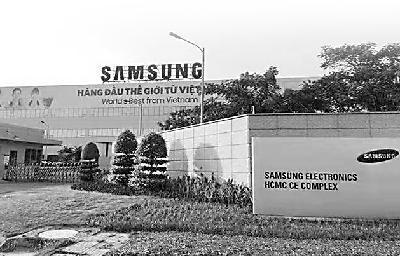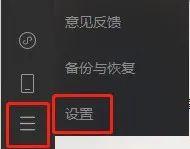Vietnam Semiconductor speed up, will be diverted by Chinese orders?
Author:Global Times Time:2022.08.10

South Korea's Samsung Electronics in Vietnam.
Our reporter Zhao Jueyi, a special reporter in Vietnam, Yunyu
On the occasion of the topic of "some factories in China to Vietnam" attracted much attention, a recently announced investment in South Korea's Samsung added a fire in the semiconductor industry. According to Vietnamese media reports, Samsung ’s local time revealed on the 5th that it is planned to mass -produce semiconductor packaging components in a factory in Vietnam next year. "Nikkei Asia" states that this marks the third business in Vietnam after home appliances and smartphones. Industry insiders told the Global Times reporter that Southeast Asia, including Vietnam, is an important part of the global semiconductor industry chain, but the current industry is still concentrated in low -profit packaging and testing links. This is also possible to compete with China. field. However, Vietnam and other countries hope to develop to the upper reaches of the industrial chain, which is currently difficult.
In addition to Samsung, what other semiconductor giants are in Vietnam?
According to the Vietnamese "Express" website, Samsung Electronics CEO Lu Taiwen stated in Vietnam on the 5th that the company is testing the production of FC-BGA high-performance semiconductor packaging boards in Taiyuan, northern Vietnam, and plans Production. Public information shows that the product is mainly used to connect the electronic parts of the CPU (central processor) and GPU (image processor) and the electronic components of the printed substrate, which is not the most core wafer manufacturing of semiconductors.
Lu Taiwen also revealed that Samsung is expected to establish a research and development center in Hanoi at the end of 2022 or early 2023 to support the development of Samsung in Vietnam and Southeast Asian countries. According to the Vietnam News Agency, South Korea currently has two large factories in Taiyuan and Beining Province in Vietnam, and there are also factories in Ho Chi Minh City and other places. The main business is concentrated in the field of electronic product manufacturing. Samsung mobile phones produced in Vietnam have accounted for more than 50%of Samsung's global output, and Samsung mobile phones made in Vietnam have been exported to 128 countries and regions around the world.
According to the data released by Samsung, its export revenue in Vietnam in the first half of 2022 was US $ 34.3 billion, a year -on -year increase of 18%. The export target of this Korean company this year is $ 69 billion and plans to invest $ 3.3 billion in Vietnam.
As a leading company in the industry, Samsung's latest operation in Vietnam will undoubtedly promote the development of this Southeast Asian national semiconductor industry. Earlier, Intel, the United States had built packaging and testing plants in Ho Chi Minh City, Vietnam. According to data released by Intel's official website, there are more than 2,700 employees in the factory, the largest one in the company's packaging and testing network, and the largest high -tech investment in Vietnam in Vietnam. In addition, Huanxu Electronics, a subsidiary of Sun Moonlight Semiconductor, Taiwan, also has factories in Vietnam, and foreign -funded enterprises such as Risa Electronics in Japan also conduct business in Vietnam.
Gu Wenjun, the chief analyst of Xinmou Research, told the reporter of the Global Times on the 9th that the world is competing around the semiconductor industry. Southeast Asian countries also want to attract relevant industries to settle. Although the semiconductor manufacturing plant is difficult to land in Vietnam and other countries, they can become "semiconductors semiconductors "Seal and testing industrial resort".
"The lowest value in the value chain"
A report released by market research company Technavio in May this year believes that from 2020 to 2025, Vietnam's semiconductor market will increase by $ 1.65 billion, with an annual growth rate of 6.52%. Vietnam's "Hanoi Times" said that despite the impact of the new crown pneumonia, Vietnam's semiconductor industry is expected to attract foreign investment, which also stems from its potential growth.
As of now, Vietnam's semiconductor industry is still mainly packaging and testing, and the low -profit seal and testing industry has gradually shifted to China and gave them opportunities. The semiconductor industry is mainly divided into four major processes of design, manufacturing, packaging, and testing. Among them, R & D and manufacturing are high -density of technology and capital, and also occupy most of the profits in the industrial chain. Gu Wenjun told the Global Times reporter that semiconductor manufacturing is different from semiconductor seal testing. The technical content required for seal and testing is relatively low. The demand for senior engineers is lower than semiconductor manufacturing. Taking root.
Unlimited Management Consulting The High -level manager of the Hanoi Office Felipo Boltoleti previously introduced in an interview with foreign media that Vietnam lacks local semiconductor design capabilities, and major components such as electronic chips also depend on importing from other countries. Only a few companies carry out research and development activities in Vietnam. Midstream is the only link with advantages and development in Vietnam. Local companies focus on assembling finished products and export components, with the lowest added value in the value chain. Due to the lack of marketing capabilities and funds, downstream sales activities are mainly carried out outside Vietnam.
The current status of Vietnam's semiconductor industry also reflects the overall situation of Southeast Asia in this field. The most important semiconductor base in the region is Malaysia, Intel, Intel, Yingfei, Semiconductor Semiconductor, Osram and other well -known companies in this factory. Statistics show that Malaysia occupies 13%of the world's closed -testing share, and it is also one of the world's seven major semiconductor export centers. However, the Malaysian semiconductor industry is still working hard to gradually develop from cheap foundry to design and manufacturing.
For the prospects of the Vietnamese semiconductor industry, Gu Wenjun believes that Vietnam's advantage lies in a large number of cheap labor and land. Steve Long, general manager of Intel Asia Pacific and Japan, mentioned in an interview with Vietnam's "Express" that a stable social and political environment, increasingly liberalized trade and investment policies, and young and capable labor force are foreign investors, especially in particular, especially Large technology companies believe that Vietnam has attractive reasons. However, he also mentioned that Vietnam still needs to have necessary infrastructure and policies to support the cutting -edge manufacturing business of the semiconductor industry. "Soft power" and "hard fist"
Vietnam's disadvantages on the semiconductor industry chain are not small. Gu Wenjun analyzed that the "soft power" of the local government's policy efficiency and its leading infrastructure construction "hard fist" is an important factor in the development of the local semiconductor industry. In terms of policy efficiency "soft power", the establishment of semiconductor manufacturing factories will involve infrastructure construction, land demolition, and factories, etc., and require efficient government work to better implement. The lack of infrastructure construction such as water, electricity, gas, etc., restrict the development of the semiconductor manufacturing industry. In addition, countries have begun to pay attention to the cultivation of local semiconductor manufacturing capabilities, and to a certain extent, semiconductor manufacturers will restrict the manufacturing capacity in other countries. The subsidies of Vietnam and other countries to the semiconductor manufacturing industry are inferior to the United States and South Korea, and the main body of semiconductor manufacturing does not need to be closer.
Vietnamese people who are familiar with the situation told the Global Times reporter on the 8th that although Vietnam has a strong economic growth in recent years, the comprehensive resources and capabilities are still insufficient. This is the fundamental issue that restricts the development of the electronic industry such as its semiconductor. The semiconductor industry consumes a lot of electricity, and Vietnam is currently insufficient power supply. To a certain extent, it depends on foreign "transmission".
In addition, Vietnam has neither sufficient local semiconductor talents, nor enough capital to attract global talents to Vietnam. Vietnam lacks a senior engineer culture of semiconductor manufacturing. The semiconductor manufacturing is highly fine and high in technology. According to information on the training center of High -tech Park in Ho Chi Minh City, Vietnam shows that Vietnam currently has more than 2,000 related technical personnel, but the market's demand for high -level talents needs to be increased by at least 20%each year. In the short term, it is difficult for Vietnam to meet such demand. ▲
- END -
WeChat update!Very practical

WeChat is \new\ again! Recent WeChat 3.7.0 for Windows [ 123] (he...
[Headline News] In 2021, the added value of the core industry in Nanjing in Nanjing ranked first in the province

Recently, the Provincial Bureau of Statistics announced the results of the value -...